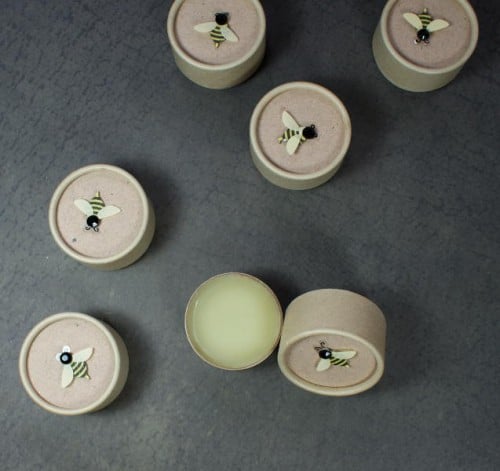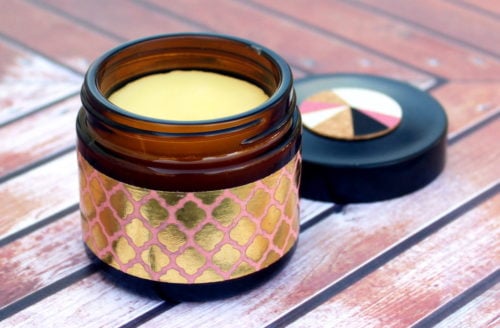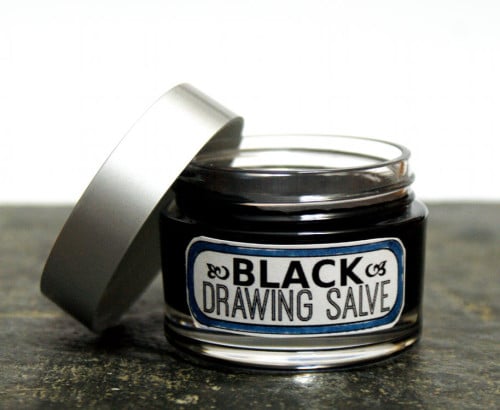
Best Herbal Salve Recipes for Every Ailment (Plus An Easy Customizable All Purpose Salve Recipe!)
Herbal salves have a long history of medicinal use as natural home remedies. Typically crafted from plant based ingredients that include a combination of carrier or herbal infused oils, essential oils and beeswax, I’ve rounded up some of the best herbal salve recipes for every ailment.

Plus learn how to create your own simple, yet affordable all purpose salve that can be easily customized for your skin specific needs.
Why choose herbal salves over modern skin care treatments?
Having grown up with a variety of frustrating skin issues, including eczema and dry skin, I’ve found that the best herbal salve recipes are also some of the best home remedies one can use. Not only are herbal salves effective at soothing itching and skin irritation, they also promote skin health. So skin not only looks and feels better after use, it can actually repair damage for healthier skin overall.
More importantly, when you make one of these best herbal salve recipes, you don’t have to worry about potentially harmful or synthetic ingredients found in many prescription and commercial over-the-counter products. I believe it’s important to know exactly what you’re putting onto your skin. After all, your skin is the largest organ on your body. So it’s just as important to take care of your skin as it is to say, take care of your eye health.

By learning about the benefits that each ingredient in this collection of best herbal salve recipes has to offer, you can easily start to customize your own herbal salve recipes. A great way to start doing this is to simply swap out the carrier oils called for in a recipe with either another carrier oil or your own herbal infused oil.
Or you can also add your own blend of essential oils. This knowledge can not only help you avoid a potential allergic reaction, but it can ensure you’re getting the right combination of ingredients for your specific skin issues.
Skin care benefits of the best herbal salve recipes
I previously mentioned that herbal salves are great at tackling bothersome skin issues and maladies. However, you may be unsure if herbal salves are suited for your particular concern. Following are some of popular concerns that herbal salves are most commonly used to address.
- Rashes and fungal infections like ringworm or even parasitic infections like scabies or flea dermatitis.
- Natural pain relief due to bruising, sore muscles and even arthritis.
- To treat poison oak, poison ivy and poison sumac.
- Sunburns and minor burns.
- Eczema, psoriasis or even hives.
- Minor wounds, scrapes and cuts.
- Blisters and boils as well as abscesses and skin ulcers.
- Dry or cracked skin as well windburned skin.
- Insect bites and stings.
- Inflamed bunions or bedsores.
How can I learn more about natural ingredients used in the best herbal salve recipes?
Mountain Rose Herbs is a wonderful source of knowledge for learning about a vast array of organic herbs, carrier oils and essential oils. In addition to information on the natural products they offer, you can also learn more about creating your own herbal salves on the Mountain Rose Herbs blog.
I also highly recommend the book by renowned herbalist Rosemary Gladstar titled, Rosemary Gladstar’s Medicinal Herbs: A Beginner’s Guide: 33 Healing Herbs to Know, Grow, and Use.
The books Alchemy of Herbs, The Herbal Apothecary, and Essential Oils Natural Remedies: The Complete A-Z Reference of Essential Oils for Health and Healing are also great places to start your introductory journey.
All Purpose Salve
Whether you want to test the waters by making a simple salve or want to learn how to create your own custom salve recipes, my all purpose salve recipe is a great springing board for developing your own herbal salve recipes.
Why I love this easy customizable all purpose salve recipe:
- It’s non-greasy. Formulated using fractionated coconut oil in lieu of other common carrier oils such as olive, this all purpose salve is less greasy than other herbal salve recipes you commonly come across.
- It’s moisturizing and nourishing. Rather than combing simply beeswax and a carrier oil to create this salve, I also used a combination of cocoa butter and shea butter to moisturize skin and promote skin health.
- It protects skin. As beeswax is a wax, it forms a protective barrier when applied to skin as part of a homemade or herbal salve. This protective barrier not only locks in moisture, but it also helps to keep out environmental assaults like wind and dry air.

- It’s naturally antibacterial and antifungal. Often when we have skin issues there’s more to the story than just dry or irritated skin. Because coconut oil is naturally antibacterial and antifungal, this all purpose salve recipe can help tackle problems we aren’t entirely aware of.
- It’s perfect for sensitive skin. While customizable, this all purpose salve recipe is unscented and contains just four simple ingredients to nourish and protect skin. Even without the addition of an infused carrier oil or even essential oils, this salve still works wonders for most skin types as is. (Extra sensitive skin users can go even simpler with this all purpose salve recipe and simply combine 3 parts carrier oil of choice with 1 part beeswax. As beeswax is anti-allergenic, just about everyone can enjoy the benefits of this natural ingredient combined with just one simple carrier oil.)
- It soothes and calms itching. Because this all purpose salve recipe contains beeswax, it does a bang up job of soothing itching – especially when it’s associated with dry skin.
Aside from adding essential oils to this all purpose salve recipe based on your own skin care needs, you can also substitute the fractionated coconut oil with another carrier oil of your choice.
Sea Buckthorn Oil is one of my favorite carrier oils. Not only is sea buckthorn oil rich in nutrients that skin craves, this gentle carrier oil is also a great fit for sensitive skin. Not only does it nourish, soothe and protect skin but it also helps to promote skin health.
When used in an herbal salve recipe, sea buckthorn oil helps to speed healing and damage to skin cells. It also calms inflammation caused by common skin conditions such as sunburns and even psoriasis. Additionally, the high vitamin E content makes sea buckthorn a great choice for anti-aging products and salves.
You’ll also find that sea buckthorn oil is a great choice for fading acne scars and blemishes. This is one of the reasons it’s a must have ingredient in this best scar and stretch mark treatment from my fellow blogger, Cari Dunn.
To learn more about the benefits of other carrier oils you may wish to use in your own all purpose salve recipes, be sure to check out the book, Carrier Oils: A beginner’s guide to using over 40 carrier oils in bath and body recipes, by Cari Dunn in addition to some of the other great resources I mentioned above.
Keep reading to learn how to make my simple, customizable all purpose salve recipe as well as for a list of the best herbal salve recipes for a variety of everyday ailments and skin complaints.

Customizable All Purpose Salve Recipe
Ingredients:
You will need the following ingredients to make this best all purpose salve recipe:
- 1 oz. cocoa butter
- 1 oz. shea butter
- 1 oz. cosmetic beeswax
- .5 oz. fractionated coconut oil
How to Make All Purpose Salve
Here is how to make an all purpose salve to use as the base for any herbal salve recipe:
Step #1:
Using a digital scale, weigh out the beeswax, cocoa butter and shea butter.
Step #2:
Combine these ingredients in a double boiler and heat until melted. Then remove from heat.
Step #3:
Next weigh out the fractionated coconut oil and stir into the melted beeswax and butters.
Step #4:
If desired, customize your salve by adding essential oils. Typically it’s safe to add up to 12 drops of an essential oil per ounce of your recipe. However, some essential oils should be used in smaller quantities.
To be safe always check to see what the skin safe recommended usage for your essential oil of choice is. And be sure to research your essential oils beforehand as not all of them are safe for use by pregnant women or children.

Additionally, as there are what are essentially fake essential oils on the market falsely claiming to be 100% pure therapeutic essential oils, I recommend purchasing essential oils from Mountain Rose Herbs. This company has been independently tested by industry watch groups and have been found to only ever sell the real deal.
To customize this all purpose salve recipe one step further, infuse herbs in the fractionated coconut oil (or another carrier oil) to create an herbal oil infusion. Then simply use the herbal infused oil in place of the fractionated coconut oil in this or any of the best herbal salve recipes that can be found below.

You can learn how to make your own herbal oil infusions along with the various methods for infusing herbs in oil via this tutorial from the Mountain Rose Herbs blog. This instructional guide walks you through the traditional folk process of making solar infused oils as well as the quick method for heat infusing oils.
The final consistency of this all purpose salve is mostly solid at room temperature – it also makes a great solid lotion bar – but quickly and easily melts right into skin. You’ll love it for cracked, dry winter hands as well as a multitude of other uses!
To use your all purpose salve, simply apply to your hands, feets, lips and other problem areas as desired.

Best Herbal Salve Recipes to Make at Home
Now that you’ve gotten your feet wet with my easy all purpose salve recipes, here’s a collection of the best herbal salve recipes that you can make at home. I hope you’ll love them as much as I do. And once you’ve tried a few for yourself, I hope that I will have inspired you to custom create your own best herbal salve recipe for your family!
- Herbal Scar & Stretch Mark Salve Recipe with Helichrysum Essential Oil
- Honeybush Tea Infused Herbal Salve Recipe for Eczema
- Cracked Heel Repair Salve with Sea Buckthorn Oil & Lanolin
- Natural Rosemary & Neem Oil Foot Salve Recipe
- Natural Lanolin Salve Recipe for Dry, Damaged Skin

- Homemade Healing Winter Salve Recipe with Rosewood Essential Oil
- Heal & Protect Tinted Lip Salve for Chapped Lips
- Homemade Foot Repair Salve Recipe with Eucalyptus Essential Oil
- Homemade Chamomile Salve Recipe with Chamomile Infused Herbal Oil
- Lanolin & Neem Oil Salve Recipe with Calendula Infused Herbal Oil
- Herbal Rose Salve Recipe for Dry Skin

- Chocolate & Lavender Cayenne Pain Relief Salve Recipe with Chili Seed
- Chili & Chocolate Homemade Sore Muscle Salve Recipe
- Homemade Ginger Salve Recipe for Sore Muscles
- Arnica Pain Relief Salve for Sore Muscles & Inflammation
- Dry Skin Salve Recipe with Baobab Oil
- Headache Relief Salve Recipe with Natural Essential Oils

- Black Drawing Salve Recipe for Insect Bites, Splinters & Boils
- Herbal Infused Lavender Mint Salve Recipe
- Best Herbal Calendula Salve Recipe with Calendula Infused Oil
- Simple Breathe Easy Salve Recipe
- Homemade Biotin Cuticle Salve Recipe
- Dandelion Salve Recipe for Dry, Cracked Skin
To discover more of the best herbal salve recipes, be sure to check out and follow my Best Homemade Salve Recipes board on Pinterest in addition to my other Pinterest boards.
Where to Buy the Best Herbal Salves
If you’d like to try an herbal salve but aren’t quite ready to tackle my list of the best herbal salve recipes, no worries. You can totally buy just about any herbal salve your heart desires from an array of handmade artisans. Following are some of my favorite homemade herbal salves that you can purchase online from sellers on Etsy.

- Herbal Prairie Rose Salve from Prairie Folk Supply Co. (Pictured above.)
- Oregano & Lavender Herbal Salve for Acne from Kimberly’s Kupboard
- Anti-Inflammatory Turmeric Herbal Salve from Owens Acres
- Nature’s Revenge Herbal Salve from WaiKe Botanicals
- Hemp Seed Pain Salve from Botanical Delights

- Dandelion Wild Harvested Herbal Salve from Wandering Wildcraft (Pictured above.)
- Moisturizing Herbal Salve from HumbleLove
- Calendula Healing Herbal Salve from NakedPagan
- St. John’s Wort Healing Herbal Salve from TheBEEKEEPERshop
- Herbal Black Drawing Salve from Essence of Earth
If you’re still interested in exploring more of the best herbal salves, you can browse Etsy for even more herbal salves that you can buy. Or shop from among some of my other handmade, artisan favorites!
For more natural beauty and skin care recipes, also be sure to follow Soap Deli News across all of your favorite social media platforms! You can find and follow me on G+, Tumblr, Facebook, Twitter, Blog Lovin’, and Instagram as well as subscribe to Soap Deli News via email for future updates, DIY projects and recipes.




6 Comments
Janet
April 16, 2018 at 11:16 pm
I to do Salves for people, its always nice to see others doing Salves too. And your stuff very good, I just have a question. Also people I give salves to have a problem with St. John Wort has problem with sever skin problems, so is there another herb can take it place. For me I just leave it out of the Salve for that person. Live in small town each salves I make for are different for each person, and as always they check with their Doctors what herbs they use. Love working with herbs. Keep up the good work. Janet
Rebecca D. Dillon
April 17, 2018 at 8:08 am
I like plantain and violet leaf and think either one or both would make a great substitute.
Brenda in TX
October 29, 2018 at 12:24 pm
Loved reading this and want to get myself making more serious salves. I have a problem I’d love your advice on…
My Down Syndrome son has had a “rash” which gets scabby and itchy all over his head. He has had it for years. Nothing I do seems to help it. He also gets brown patches of ??? (looks like he’s dirty..he’s not). I can not scrub those off.
I do not want to take him to a dermatologist and be told to use chemicals.
Rebecca D. Dillon
October 29, 2018 at 3:43 pm
I’m so glad you enjoyed my post. I love it when I’m able to inspire others to get crafty! I’m sorry to hear about your son’s dilemma. I would start by changing his shampoo. I’ve had some shampoos that give me seborrheic dermatitis where others do not. Look for one that’s made with natural ingredients and free of SLS and go with unscented if you can. You can then simply add a few ingredients to your son’s shampoo. For an 8 oz. bottle I’d add 1-2 Tablespoons of neem oil along with 1 mL each (or about 20 drops each) of lavender, rosemary, peppermint and tea tree essential oils. (Make sure you’re getting your oils from a trusted supplier to ensure there are no chemicals added.) Mix it all up and shampoo with that as usual. You should notice a marked difference starting out and his scalp should improve once you start using these ingredients. You can use an apple cider vinegar rinse (where the ACV is diluted) once or twice a week. I’ve also heard great things about making a scalp mask and/or scrub using bentonite clay. I have a local acquaintance who says it does wonders for her hair and scalp. I hope this helps!
rica
February 15, 2019 at 3:52 am
What salve would you recommend for back acne dry skin? Thank you
Rebecca D. Dillon
February 15, 2019 at 8:07 am
I don’t know that I’d use a salve for acne. A cream may work better, however you can certainly try a salve. I’d probably use something with neem oil and shea butter and then essential oils like lavender and tea tree for acne.
Comments are closed.